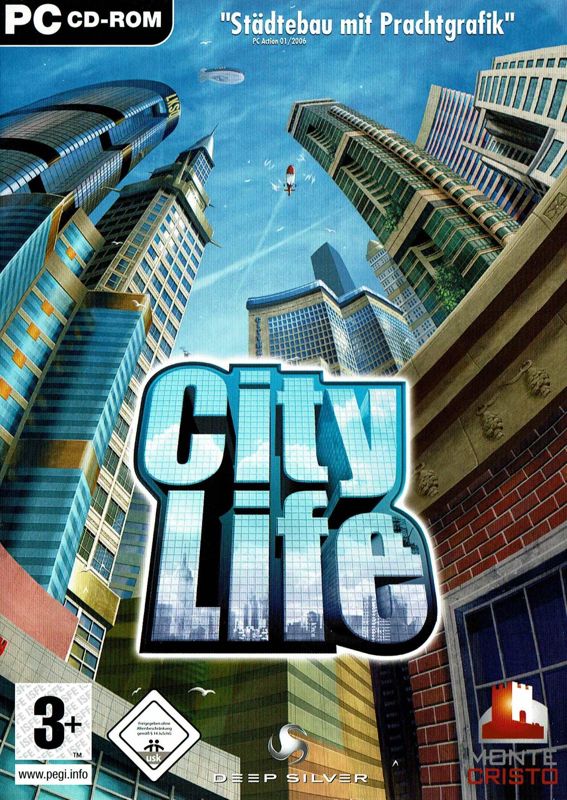Retro Replay Review
Gameplay
City Life builds on the classic city-building formula by introducing a deep social simulation that challenges you to cater to six distinct economic classes. From the Have-Nots to the Elites, every group has unique demands for housing, entertainment, education, and leisure. This layered approach forces you to think beyond simple zoning grids; you must strategically place parks, shops, and transportation hubs to keep each demographic satisfied.
The game’s mechanics encourage constant adaptation. As your population grows, the balance of classes shifts, triggering new requirements. A booming middle class might demand more cultural venues, while an influx of blue-collar workers could prioritize affordable housing and public transit. You’ll find yourself juggling utility placement, tax rates, and public services to maintain harmony and prevent social unrest.
City Life also incorporates detailed mission objectives across 22 prebuilt maps, each with unique challenges such as industrial downturns, traffic congestion, or environmental disasters. If you prefer a more relaxed pace, the sandbox mode frees you from goal-oriented constraints, letting you experiment with road layouts, district painting, and free-form urban design. The built-in map editor further extends the gameplay by allowing you to craft and share custom scenarios with the community.
Graphics
Powered by a fully 3D engine, City Life offers dynamic camera controls that let you rotate, tilt, and zoom into your cityscape. The ability to swoop down to street level or pull back for a bird’s-eye overview provides both aesthetic pleasure and practical oversight when managing traffic flow or zoning patterns. The engine runs smoothly on most modern hardware, ensuring a stable frame rate even when your city balloons into the hundreds of thousands of residents.
The visual design strikes a balance between realism and readability. Buildings are richly detailed, with distinct architectural styles for each social class—from modest tenements to high-end skyscrapers. Color-coded zoning overlays and clear UI icons help you quickly identify problem areas, such as overcrowded districts or underfunded public services.
Animations bring the city to life: cars flow along highways, citizens stroll through plazas, and construction cranes swing atop rising towers. Weather effects—like rainstorms, snow, and fog—add atmosphere and can subtly impact citizen happiness or utility performance. While not pushing the boundaries of photorealism, City Life’s graphics effectively convey the bustling, ever-changing nature of a living metropolis.
Story
City Life does not follow a traditional narrative with scripted characters and cutscenes. Instead, its story emerges organically through the social and economic evolution of your city. Each district develops its own “personality” as you tailor services and policies to its inhabitants. Will your downtown elite favor cultural centers and high taxes, or will you ward off gentrification to protect your lower-income neighborhoods?
The game’s missions offer bite-sized storylines that frame your goals within real-world scenarios. In one campaign, you might rescue a city from industrial collapse; in another, you could transform a sleepy town into a tourist hotspot. These scenarios set the stage for dramatic shifts in population and revenue, creating memorable “story beats” as you navigate crises and milestones.
Furthermore, the social feedback system—complaints, petitions, and polls—acts as an ongoing narrative thread. Citizens write queries about the rising cost of living or demand new schools, making you feel accountable as the mayor. The emergent storytelling keeps you invested, because every policy decision ripples through your city’s social fabric.
Overall Experience
For fans of city simulation, City Life offers a refreshing twist on the genre by foregrounding socioeconomic dynamics. The learning curve is gentle enough for newcomers yet provides enough depth to engage veteran city-builders. Striking the right balance between six competing social classes can be challenging, but that complexity is precisely what makes the game so rewarding.
Replay value is high thanks to the variety of predefined scenarios and the robust map editor. Community-made maps and challenges are freely shared online, ensuring you’ll never run out of new objectives. Whether you aim to craft a utopian megacity or experiment with radical zoning policies, the flexibility of City Life’s sandbox mode empowers your creativity.
While the interface can feel dense at first—especially when monitoring dozens of overlapping statistics—the intuitive tutorials and clear visual cues help you master the core systems quickly. Ultimately, City Life stands out by transforming the abstract concept of “population management” into a vivid social tapestry, making each city feel like a unique, breathing world. Potential buyers seeking both strategic depth and emergent storytelling will find this title a compelling addition to their collection.
 Retro Replay Retro Replay gaming reviews, news, emulation, geek stuff and more!
Retro Replay Retro Replay gaming reviews, news, emulation, geek stuff and more!




Reviews
There are no reviews yet.